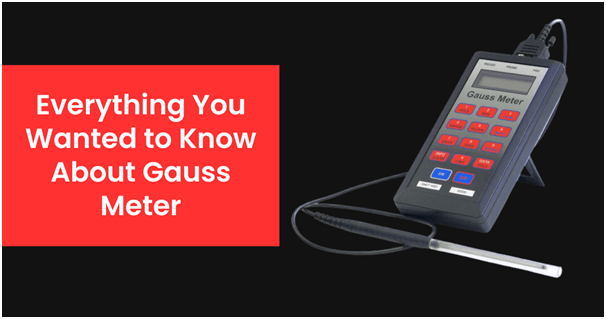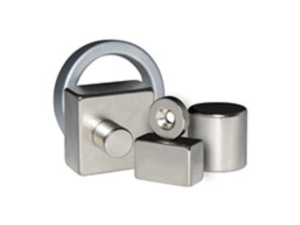

Gauss meters are an important tool for measuring the strength of magnetic fields. Whether you’re an engineer, scientist, or just an enthusiastic hobbyist, understanding the basics of Gauss meters is essential for getting the most accurate results from your measurements.
In this blog post, we’ll cover everything you need to know about Gauss meters—from the different types available to how they work and the various applications they can be used for.
Read on to learn more!
A Gauss meter is a specialized instrument used to measure the strength of a magnetic field, typically expressed in Gauss or Tesla. It is an important tool for physicists and engineers that helps them to measure, understand, and manage magnetic fields. The magnetic field can be measured in terms of its strength and direction, both of which are critical to many applications.
In most cases, the device consists of a flat metal plate with a sensitive wire wound around it. This wire is then connected to a display device that will measure the magnetic field. Depending on the model, the display may show either a numerical reading or a graph. The readings from the Gauss meter can be used to calculate the total force of the magnetic field or just its intensity.
The most common type of Gauss meter measures the Earth’s magnetic field, but many other types can measure the strength of magnets. These instruments are used in a variety of settings, from factories to hospitals, for a wide range of purposes. For instance, they can be used to detect and measure stray magnetic fields from electrical components, identify magnetically-induced objects, and determine the size and shape of magnetic fields to make sure they are safe.
Gauss meter has a sensor called a Hall probe to measure transverse magnetic fields. Hall probe is usually flat so that it can measure the transverse magnetic fields accurately. However, it can be axial to measure the fields parallel to the probe, such as those that exist inside a solenoid. Both flat and axial types can be used for general-purpose magnetic field measurements.
Probes are frequently strengthened with brass to protect them from harsh surroundings because they can be delicate, particularly when made to measure small fields.
The meter passes a test current through the probe, and the Hall Effect generates a voltage, which the meter then records. The meter can freeze the reading at a specific value, capture measurements and retain them, and only record the greatest voltage detected because magnetic fields are rarely static and because the voltage changes. Some meters can discriminate between DC and AC fields and provide an automatic calculation of the AC fields’ root mean square (RMS).
The Hall probe, the most crucial component of the Gauss Meter, is typically flat to provide the best measurement of transverse magnetic fields.
The simplest way to use a Gauss meter is as described above. The majority of magnets have pre-measured ratings, although some people, including researchers, electricians, teachers, and product designers, find a Gauss Meter beneficial while creating or working on projects.
First, think about the type of measurement you need to make. Different types of Gauss meters are designed to measure different types of magnetic fields, so make sure the model you choose is designed for the kind of measurement you need. Also, they have different measuring ranges.
Besides, think about the accuracy you need. Not all Gauss meters are equally accurate, so make sure you pick one that will provide you with accurate measurements.
Finally, think about the features and functions you need. Many Gauss meters offer a range of features, such as data logging and remote readouts. Make sure you choose a model that includes all the features you need.
Q: What is a Gauss meter?
A: A magnetometer, commonly referred to as a Gauss meter, is a tool used to gauge the direction and strength of a magnetic field. It can gauge the power of both permanent and transient magnets.
Q: How does a Gauss meter work?
A: A Gauss meter works by measuring the strength of a magnetic field and converting it into an electrical signal. The signal is then processed and displayed in the form of a numerical readout.
Q: What are the benefits of using a Gauss meter?
A: Using a Gauss meter can help you quickly and accurately measure the strength and direction of a magnetic field. This can be very useful for any application that requires precise measurements of magnetic fields, such as the design and production of electric motors or other electronics.
Q: How do I choose the right Gauss meter for me?
A: Choosing the right Gauss meter for your application depends on your specific needs. Consider factors such as accuracy, sensitivity, and portability before making your decision. Make sure to research different models and brands to find one that fits your budget and will give you the best results.
Q: Are Gauss meters dangerous?
A: Generally speaking, no. Gauss meters are designed to be used safely and should only be operated by qualified personnel. If you’re unsure how to use a Gauss meter safely, make sure to consult the manufacturer’s instructions and contact an expert if necessary.

Magnetic sheeting is a flexible material that can be magnetized on one side and often has an adhesive or printable surface on the other. It

Magnets come in various shapes and sizes, each designed for specific uses. Understanding the different shapes of magnets, their properties, and their applications can help

Magnets are a fascinating part of our everyday lives, from the magnets on our fridge doors to the powerful magnets used in advanced technology. There
Our magnet experts will help you get exactly what you need – custom or stock – in record time with great quality at a very competitive price.
Ⓒ 2024 - All Rights Are Reserved